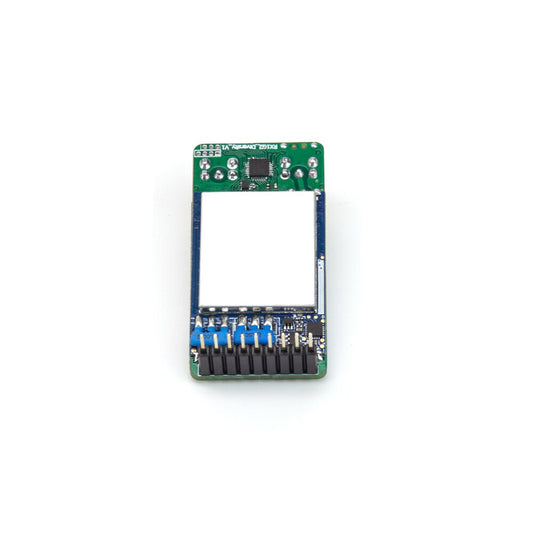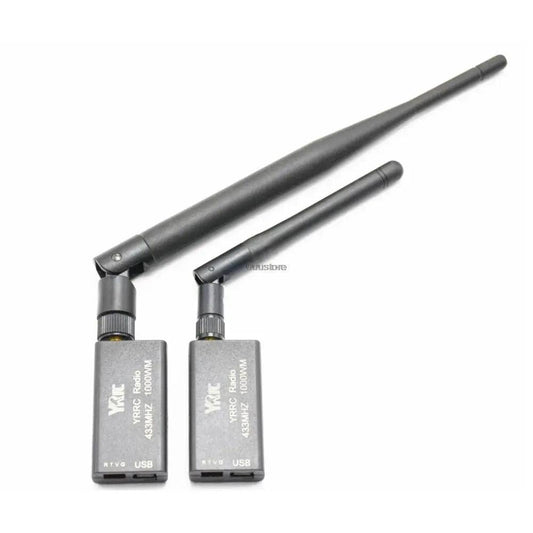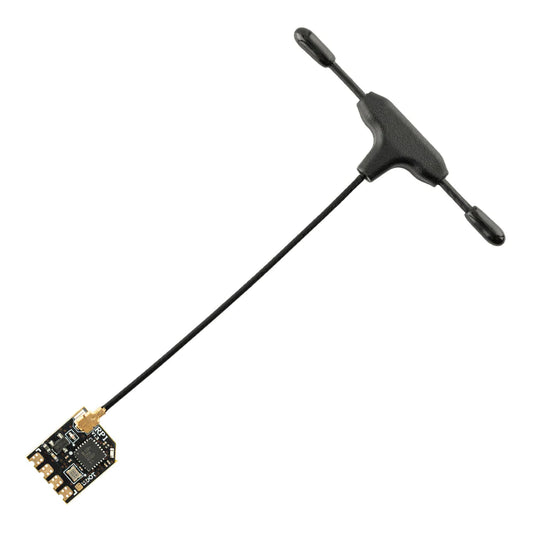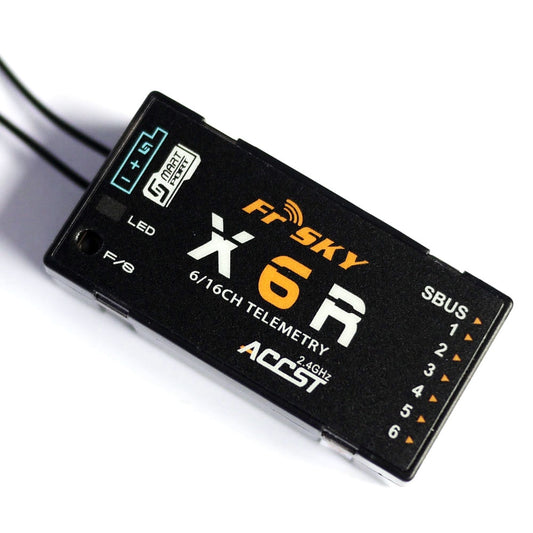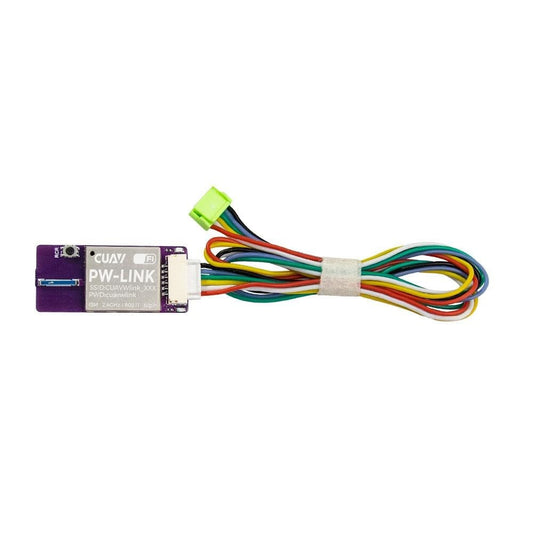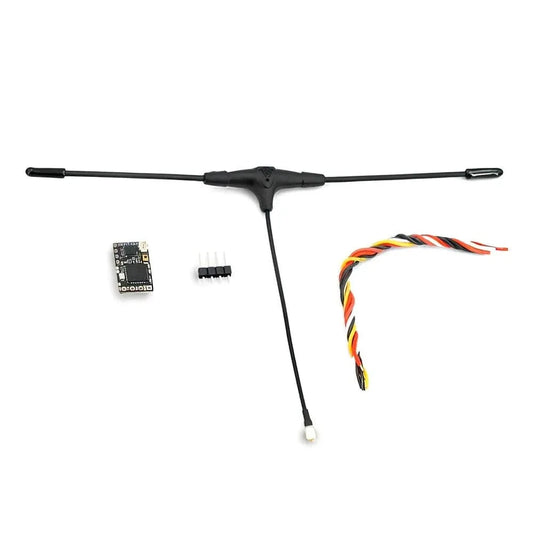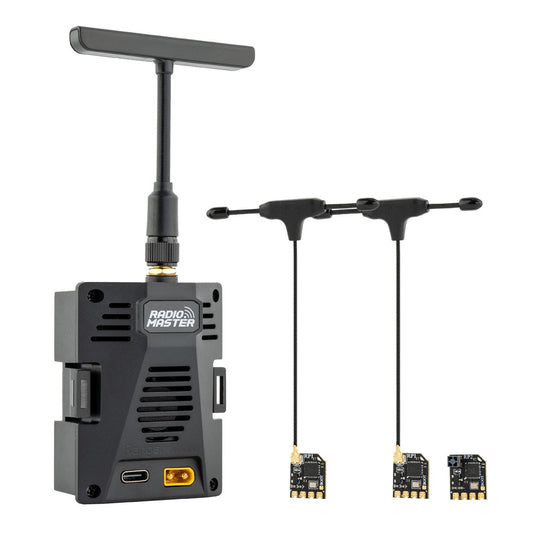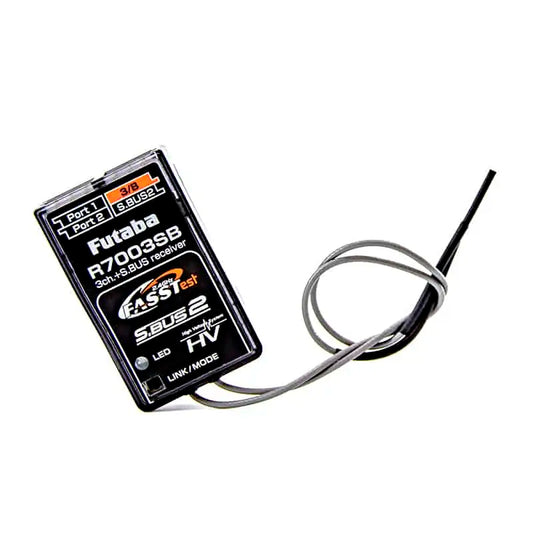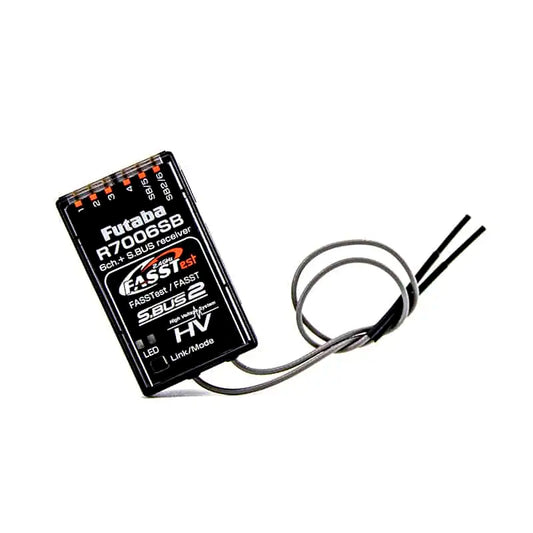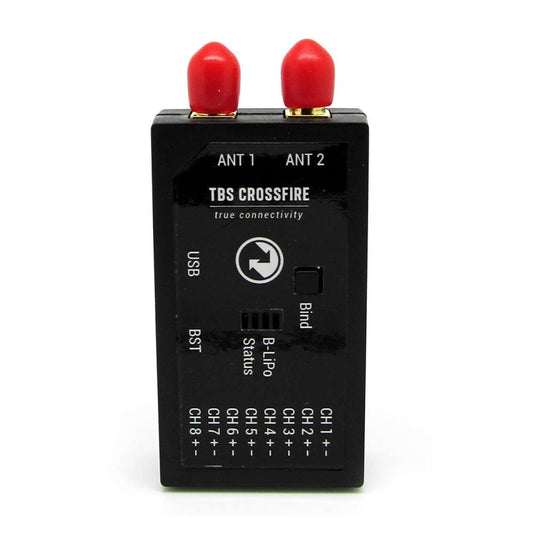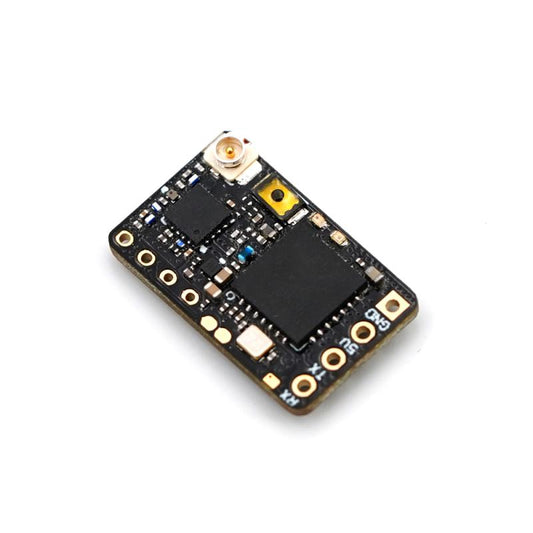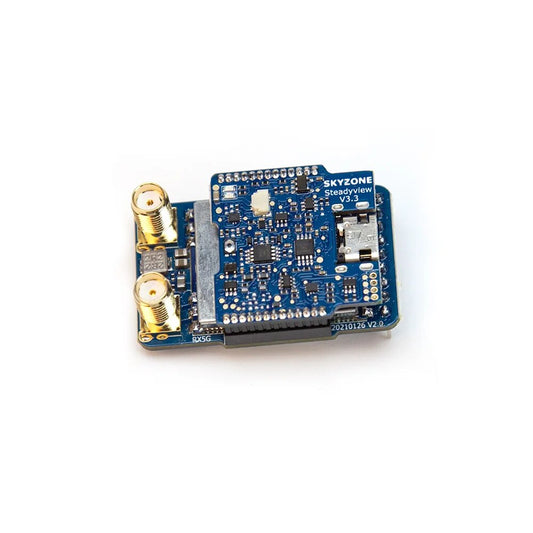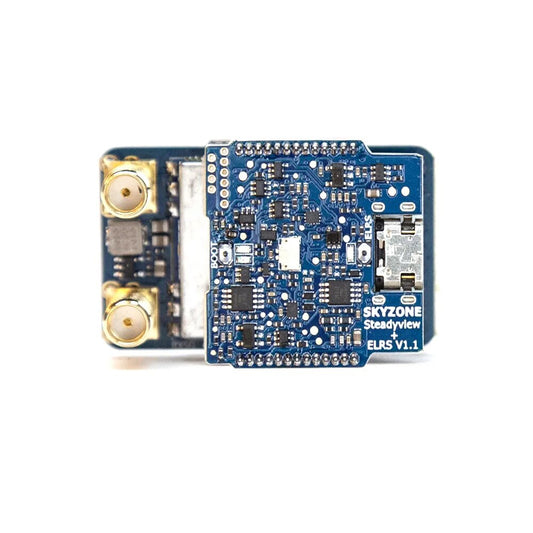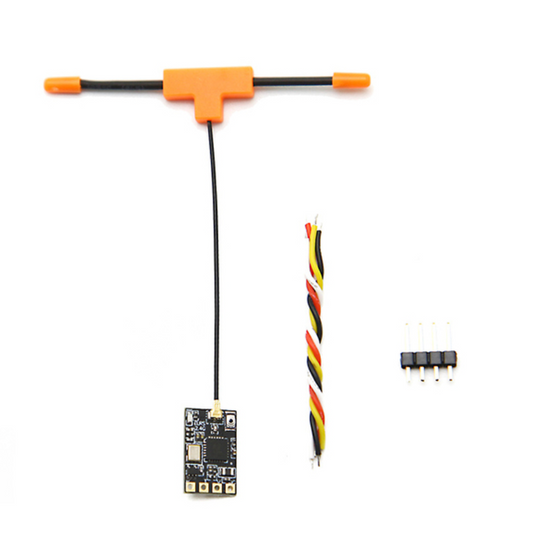-
SKYZONE 1.2GHz Diversity Receiver 4db antenna
Regular price $89.78 USDRegular priceUnit price per -
RD945 Skyzone ISM 5.8G Wireless Dual Receiver & TS832 Transmitter 5.8GHz 48CH VTX For 250MM FPV Multicopter RC Toys Part
Regular price From $28.66 USDRegular priceUnit price per -
3DR Radio Data Telemetry - 433mhz 433 1000MW 915mhz 500mw Data Telemetry TTL & USB Port For APM2.6 APM2.8 Pixhawk 2.4.8 Pixhack FPV RC Drone
Regular price From $77.17 USDRegular priceUnit price per -
Futaba R9001SB 1Ch 920MHz System S.Bus port Air Receiver
Regular price $189.99 USDRegular priceUnit price per -
Skydroid UVC Single Control Receiver - OTG 5.8G 150CH Channel FPV Receiver Video Transmission Downlink Audio For Android phone
Regular price $39.86 USDRegular priceUnit price per -
FrSky V8FR-II 2.4Ghz 8CH ACCST Receiver
Regular price $35.00 USDRegular priceUnit price per -
FrSky RX6R Receiver - 6 PWM and 16 Channels Sbus outport with redundancy function
Regular price $50.00 USDRegular priceUnit price per -
RadioMaster RP1 V2 ExpressLRS 2.4ghz Nano Receiver - With Built-in TCXO Fit For Whoops, Drone, Fixed-Wing Aircraft
Regular price $32.00 USDRegular priceUnit price per -
FrSky X6R 6ch 16Ch S.BUS ACCST Telemetry Receiver With Smart Port
Regular price $37.71 USDRegular priceUnit price per -
CUAV PW-LINK Wifi Telemetry Module - Wifi Data Transmission for PIX FPV Telemetry PIXHACK PIXHAWK Flight Controller
Regular price $46.73 USDRegular priceUnit price per -
iFlight ELRS 500mW Receiver - ExpressLRS 900MHz / 2.4G 500mW RX for FPV Drone
Regular price $26.23 USDRegular priceUnit price per -
FLYSKY FTr4 Receiver - 2.4GHz 4ch AFHDS 3 protocol w/S-Bus/i-Bus/PPM/PWM Support & NB4/PL18 Compatibility
Regular price $39.00 USDRegular priceUnit price per -
FLYWOO TBS Crossfire Nano Rx
Regular price $33.25 USDRegular priceUnit price per -
RadioMaster Ranger Micro 2.4GHz ELRS Module Combo Set for TX16S TX12 MKII
Regular price From $48.68 USDRegular priceUnit price per -
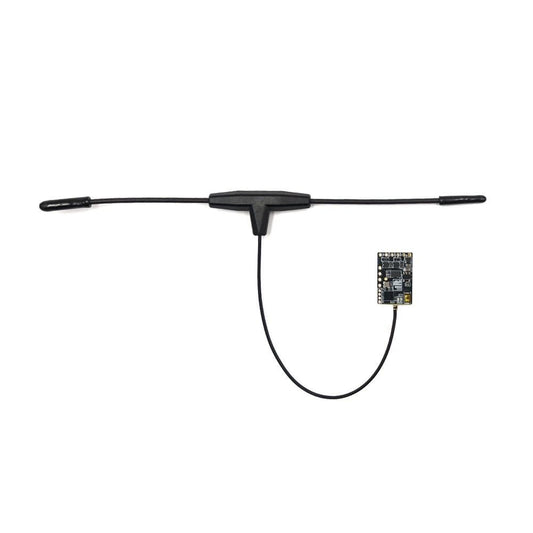
FrSky R9MX R9 MX OTG Receiver - 868MHz / 915MHz Enhanced R9MM/R9mini ACCESS OTA Long Range Receiver
Regular price $47.72 USDRegular priceUnit price per -
RadioLink R16SM 16 Channels Receiver with SBUS/CRSF and Built-in Telemetry
Regular price $33.00 USDRegular priceUnit price per -
Futaba R324SBS 4-Channel T-FHSS S.Bus2 Receiver, 3.7–7.4V, Compact Telemetry RX for RC Surface Models
Regular price $75.99 USDRegular priceUnit price per -
Futaba R203GF 3-Channel 2.4GHz S-FHSS Surface Receiver
Regular price $49.00 USDRegular priceUnit price per -
FUTABA R7308SB 8 Channel 2.4GHz FASSTest High Gain Antenna S.BUS Receiver
Regular price $182.96 USDRegular priceUnit price per -
Futaba R7003SB Receiver - 2.4GHZ 3 Channels FASSTest Bi-Directional Communication System S.Bus/S.Bus2 Port Receiver
Regular price $145.00 USDRegular priceUnit price per -
Futaba R7006SB 2.4 GHz 6-Channel FASSTest Receiver
Regular price $110.00 USDRegular priceUnit price per -
Flysky FS-IA8X 2.4GHz8CH Receiver - AFHDS 2A PPM IBUS Mini Receiver for FS-Nirvana FS-NV14 FS-i6 FS-i6s FS-i6x FS-i8 FS-i10 Transmitter RC
Regular price $18.78 USDRegular priceUnit price per -
FLYSKY GMR 2.4GHz 4CH Receiver - AFHDS 3 PWM Output for RC Racing Vehicle Compatible with NB4/NB4 Lite Transmitters DIY Replacement
Regular price $47.84 USDRegular priceUnit price per -
FrSky TD SR18 Receiver - 2.4Ghz & 900Mhz Tandem Dual-Band Receiver with 18CH Ports
Regular price $175.00 USDRegular priceUnit price per -
ImmersionRC Ghost Atto Duo Receiver - 2.4GHZ ISM Band 250HZ 500HZ Frame Rate OpenTx Integration Radio Receiver
Regular price $55.00 USDRegular priceUnit price per -
ImmersionRC Ghost Atto Receiver - 2.4GHZ ISM Band 4m Latency OpenTx 222.22HZ Race Performance Radio Receiver
Regular price From $45.00 USDRegular priceUnit price per -
TBS Crossfire 8CH Diversity RX Receiver
Regular price $159.00 USDRegular priceUnit price per -
TBS Crossfire Nano Rx Pro
Regular price $49.00 USDRegular priceUnit price per -
SKYZONE SteadyView X - 5.8Ghz IPS Screen Receiver Module Shuttle Wheel Control High Sensitivity Receiver
Regular price From $120.00 USDRegular priceUnit price per -
SKYZONE Steadyview/Rapidmix Receiver - for FPV Goggles 48CH 5.8Ghz V3.3 Hardware
Regular price From $67.74 USDRegular priceUnit price per -
Skyzone Steadyview+ELRS Backpack Receiver for FPV Goggles 48CH 5.8Ghz V3.3 Hardware
Regular price From $38.43 USDRegular priceUnit price per -
Jumper ELRS Aion Rx Mini 2.4GHZ 16CH Receiver Compatible with 2.4 mode 5KM Range Transmitter for RC Drone
Regular price $26.89 USDRegular priceUnit price per -
MFD TeleFlyTiny Tracking module - Supports MFD VBI used by MFD AP/AAT or used by MFD Crosshair AP Long Range system
Regular price $98.50 USDRegular priceUnit price per -
Goggles Receiver - 1Set ImmersionRC 5.8G RapidFire Analog PLUS Goggles Dual Receiver Module For FatShark RFIRE01 FPV RC Drone Multicopter Parts
Regular price $298.07 USDRegular priceUnit price per -
Skyzone RD40 Receiver - 5.8GHZ 40Channel RD40 Raceband Dual Diversity Receiver With A/V and Power Cables For Rc racing drone Quadcopter VS RC832
Regular price From $49.24 USDRegular priceUnit price per -
SKYDROID FPV Receiver - UVC Fuav Dual Antenna OTG 5.8G 150CH Full Channel FPV Receiver W/Audio For Android Smartphone Support transmitter
Regular price From $46.63 USDRegular priceUnit price per
